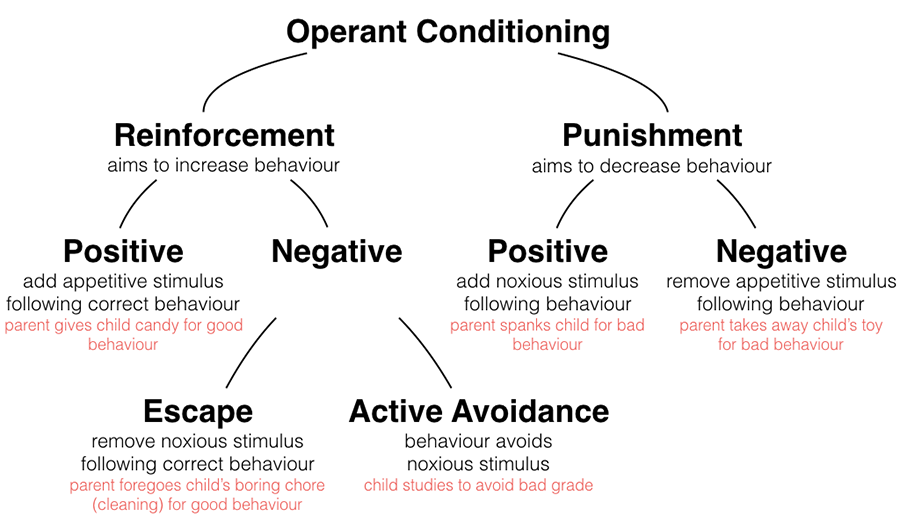BEHAVIORISM
5.3
Pavlov’s Dog and Thorndike’s Cats
Behaviorism had two main inspirations, the work of Pavlov and Thorndike, representing classic and operant conditioning, respectively.
Watson’s proposal to turn psychology into the science of behavior stemmed from an attempt to make his own perspective and favorite methods, the research of animal behavior, a more central part of psychology. In this new view, the work and prestige of pioneers like Ivan Pavlov and Edward Thorndike were key.
Pavlov’s Dog
Ivan Pavlov was a Russian physician who received the Nobel Prize for Physiology or Medicine in 1904, “in recognition of his work on the physiology of digestion”. Pavlov’s work on learning through conditioning originated directly from this line of work that involved studying dog’s reactions to food stimuli, in particular their salivation in the presence of food and food-related cues.
The Nobel Prize was of course a major source of prestige and recognition of this line of research, and his work became better known to the English-speaking community through Yerkes and Morgulis’ introduction in 1909. Take a look at the paper that introduced Pavlov’s work to North America, in particular his “salivary reflex method”: http://psychclassics.yorku.ca/Yerkes/pavlov.htm.
As Yerkes and Morgulis describe, the principle of Pavlovian or classical conditioning of inducing a conditioned reflex worked as follows:
“A dog, which has been selected for observation and in which a salivary fistula has been created, is subjected to a course of training to establish a ‘conditioned’ reflex on the basis of visual stimulation. This is accomplished by showing the animal a particular color - say green - at intervals and at the same time giving it food. After numerous repetitions of this procedure the visual stimulus becomes the sign of food and induces the salivary reflex in the absence of the food. An animal so trained is ready for experiments on the discrimination of colors. If it appears that no color except green produces the ‘conditioned’ reflex, there is reason to believe that the dog perceives green as distinct from the other colors.”
One main proof of the role of this type of procedure on Watson’s thinking is given by the (in)famous Little Albert study (Watson & Rayner, 1920; see Digdon, Powell, & Harris, 2014, for a historical treatment of the reception of the study) in which Watson tried to demonstrate that it was possible to use an unconditioned response (fear of loud noises) to condition a child to fear a distinctive stimulus that normally would not be feared (cute, furry objects).
Thorndike’s Cats
Edward Thorndike, an American psychologist, conducted research on animal learning for his dissertation, using experimental apparatuses - puzzle boxes - in which trapped animals - cats - could press or pull levers to escape (Thorndike, 1898). Thorndike would measure the amount of time it took the cats to escape a box. By recording the same animal’s escape times repeatedly, Thorndike was able to track the times it took for the animals to escape over time, and document a learning curve.
Thorndike republished this work along with related animal work in his book “Animal Intelligence” in 1911. You can learn about this work by reading Chapter 2, in particular, the sections “Description of Apparatus” and “Experiments with Cats” which provide a good overview of Thorndike’s puzzle boxes and results (core reading): http://psychclassics.yorku.ca/Thorndike/Animal/index.htm.
The findings led Thorndike to propose the “law of effect” that states that “responses that produce a satisfying effect in a particular situation become more likely to occur again in that situation, and responses that produce a discomforting effect become less likely to occur again in that situation.”
This simple principle became central to behaviorism because it opened the door to the possibility of controlling behavior not by its antecedents, as done in classical conditioning, but through its consequences. Burrhus Skinner, one of the most prominent defenders of behaviorism, would later expand considerably on this work, starting with his 1938 book “The Behavior of Organisms: An Experimental Analysis”, that would eventually lead to a more full-fledged theory that distinguished between different types of operant conditioning (e.g., reinforcement, punishment; see figure below) and schedules of reinforcement (e.g., random, fixed). These tools promised a new way of putting behavioral science at the service of society.

A common depiction of different types of operant conditioning. The taxonomy developed by behaviorists promised to put at the disposal of psychologists and lay people a set of instruments to control the behavior of children, students, or workers!
(Author’s own work)
References
Digdon, N., Powell, R. A., & Harris, B. (2014). Little Albert’s alleged neurological impairment: Watson, Rayner, and historical revision. History of Psychology, 17(4), 312–324. http://doi.org/10.1037/a0037325
Watson, J. B., & Rayner, R. (1920). Conditioned emotional reactions. Journal of Experimental Psychology, 3, 1-14. http://psychclassics.yorku.ca/Watson/emotion.htm
Thorndike, E. (1898). Some experiments on animal intelligence. Science, 7(181), 818–824. http://doi.org/10.1126/science.7.181.818
Thorndike, E. L. (1911). Animal intelligence: Experimental studies. Macmillan. http://psychclassics.yorku.ca/Thorndike/Animal/chap2.htm
Yerkes, R. M. & Morgulis, S. (1909). The method of Pawlow in animal psychology. Psychological Bulletin, 6, 257-273. [The paper that introduced Pavlov’s work to North America.] http://psychclassics.yorku.ca/Yerkes/pavlov.htm
Please note that certain links to journal articles are only available within the eduroam network if they concern publications for which the university has a campus license. If you are a member of the University of Basel and want to access university resources from home, you will need to install a VPN client.
Lizenz
University of Basel
